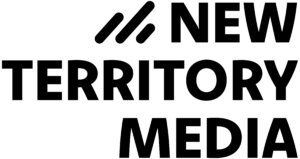A journey into fitness from online PE to the top of a mountain
This is a long article on my personal journey in stepping away from the computer, getting active, taking charge of what I ate, and ultimately climbing a mountain. In the process I lost about 40 pounds from my highest weight, vastly improved my strength and conditioning, gained a better understanding of my body, and ultimately discovered that fitness is fuel for creativity and life.
TL;DR or a Table of Contents
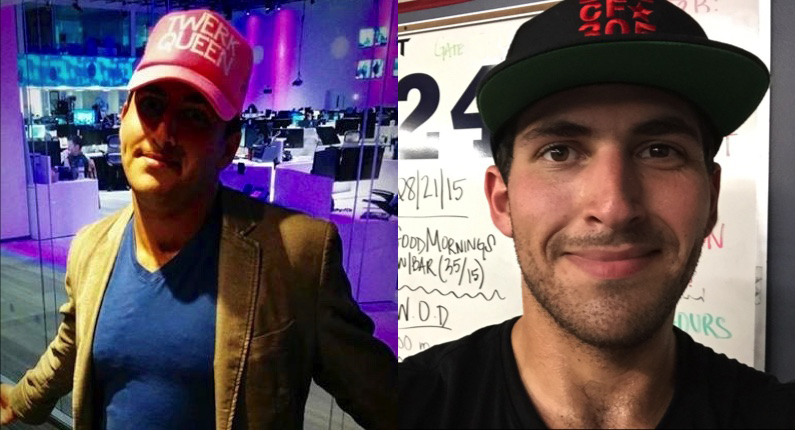
Here’s an obligatory before and after photo, taken about a year apart.
Online Exercise
Here’s some backstory: Growing up I was always a little overweight. Not huge, but I had a belly. Once I stopped growing around 5’11”, my weight stayed around 180 pounds.
I was never into sports growing up. The activities I was exposed to never appealed to me, and I wasn’t in a family where activity was part of the norm (both of my parents were morbidly obese). I avoided sports so much that I took PhysEd online.
Fast-forward through college. Nothing goes up or down; I don’t gain the Freshmen 15. The only big health moment is when I am diagnosed with Crohn’s disease after some nasty flare-ups and hospital stays; but medication helps me keep it under control.
After college, I take a year to shoot a documentary, so I’m pretty active. My diet stays about the same: lots of cereal, diet soda and microwave meals.
Then, editing on the documentary starts. I’m in front of the computer a lot, still eating the same stuff. After the film is done, I find that I still spend a lot of time in front of the computer, either producing/editing for hire or for my own projects. The amount of time in the field is short compared to how much time gets spent behind the computer.
I was never into sports growing up. The activities I was exposed to never appealed to me, and I wasn’t in a family where activity was part of the norm (both of my parents were morbidly obese).
My weight starts to creep up. Beer and some ice cream to unwind at the end of the day become habitual. I hit 190 lbs. I tell myself if I break 200 I will go on a low carb diet. I break 200. I don’t change anything. At my highest I reach 212 pounds in 2012, but I hover around 205 from 2013 to 2014.
When I did make it out to film, I would notice a sharp pain hitting my arm from the weight of the camera. I knew I was out of shape and needed to make a change.
During this time and before I had been trying to find a solution, or more a hack, to lose weight while doing the least amount of work possible. I read most of Tim Ferriss’ The 4-Hour Body with the idea that one day I would try his Slow-Carb Diet. But I wasn’t in the mindset to cook and I kept finding excuses to put it off, like “How could I possibly give up bread and pasta??.”
Kettlebells – The Gateway Drug
One tool I did pick up from the book was kettlebells. If there was only one move you did, the book said, the two handed kettlebell swing was it. Two 20 minute workouts a week? Sounded like the hack I was looking for! Plus, I could do it at home. Gyms were far too intimidating.
I ordered a 26 lb. kb off Amazon (thanks Prime shipping!) and tried to do a few swings. It felt like I was doing some work, but the 75 reps twice a week as described in the book wasn’t doing much in helping me feel like I was getting in shape.
I turned to Google to find some online kettlebell courses because going to the gym was still far too intimidating. I wanted to do something at home.
I found a kettlebell course offered by DailyBurn, an online subscription service with lots of training videos and courses.
The workouts were intense. When I first started, I could only make it through half of an hour-long lesson. Eventually I could make it through a whole class, but sometimes I’d be lying on my back afterwards, resting just as long as the course to recover. But I found that I liked a workout with that intensity.
Of course there was no external force encouraging me to go on. I could hit pause or stop and lie down at any time if I felt like it, but I stuck with it for a few months. I toned up a bit and dropped down to the high 190s. This was in the summer of 2013.
Then I got a project that involved a lot of travel. I couldn’t take the kettlebell with me, I still wasn’t willing to hit the gym, and I lost the workout rhythm.
Getting out of the House
But for the first time I can remember, I had found a physical activity I actually enjoyed. I felt better when I worked out, and I began looking forward to getting some kind of exercise in my day. I knew I needed to find something more structured in a class environment.
I also knew with a class setting, the hardest part would be just showing up. Once I showed up, I was over the mental hurdle of working out. I couldn’t cut corners or turn the tv off. I would be held accountable.
The problem was that I couldn’t find a gym that had a kettlebell class. Maybe there were some that incorporated kettlebells in a class, but the thought of signing up for a gym membership was still a little intimidating.
CrossFit
However, I knew CrossFit incorporated kettlebells. I was familiar with CrossFit for a while, observing it from afar. My impression was fitness-crazed tire-flippers that looked like they were preparing for the zombie apocalypse.
But…they had kettlebells. And that was enticing. Maybe I would enjoy the other workout movements they offered. Like most things I end up coming around to, the idea of doing CrossFit stewed in the back of my mind for a while.
I made a pact with a friend that we would get a Groupon and try it together. I live right in the middle of two different boxes. One is in South Beach. The other is at the north end of Miami Beach. I didn’t want to work out with people from South Beach, so I signed up with CrossFit A1A.
Exercise, not Fitness
My friend ended up bailing, but I knew I had to give it a shot. I showed up for the three day on-ramp course where you learn the basics of CrossFit.
There’s the fear that everyone is judging you, and that one of them might say, “Get out, you fraud!”
Entering the CrossFit box was intimidating. It was a place I had spent most of my life avoiding. There’s the fear that everyone is judging you, and that one of them might say, “Get out, you fraud!” (Of course, the reality is that at worst no one cares that you’re there and at best they’re excited someone is taking control of their health.)
My senses were hit with new sensations: the smell of sweat, floors coated with chalk and frayed rope, the sound of barbells clanking onto the floor mixed with the thump of the music blasting.
It feels like a strange world. I navigated to the back of the box, avoiding interrupting someone’s workout and fearful that I might get a barbell dropped on my head.
I went through the introduction of the movements. There’s a lot thrown at you at once, especially complex moves like Olympic lifts.
Nutrition was also covered during the intro, with the coaches saying most of the weight loss you’d get from CrossFit comes from diet, not the workouts. They recommended Paleo and The Zone diet. But I looked at paleo as another crazy-person thing and figured I’d manage with just some exercise. I wasn’t thinking about the larger picture of fitness.
Words From a Coach
My first actual CrossFit class was a mess. There was another intimidation factor here to just showing up – the meaning of any of the workouts. I was checking out the WODs (the constantly varying Workout of the Day) beforehand to see what looked good so I could jump on in. But I didn’t know what any of the moves meant! So I figured I just needed to show up.
I don’t remember what the exact workout was, but I remember clean and jerks were involved, one of the most complex lift movements. Unfortunately, the coach was not that great working with newcomers.
Something I’d learn about CrossFit is some coaches you click really well with and others not so much. And there’s even a few you wonder why they even bother coaching. So this first class, I had a really hard time getting the movements down, or understanding what the hell was going on. It was a little deterring.
But I went back to another class, different time with a different coach. That’s where I met Jeff. He was much better at breaking movements down and scaling a workout to my ability. He’s also just a cool guy. Things were finally getting fun.
I was juggling a few projects at the time, which made it easy to find an excuse to not go to CrossFit. I was going maybe once or twice a week at the start.
Jeff asked how much I was going, and I told him. Then he said, “You should come more often.”
It sounds simple, but that encouragement stuck in my head. I wanted to work out for me, but now part of me wanted to go to not let Jeff down. That was when I started committing more to CrossFit.
A Break in Alaska
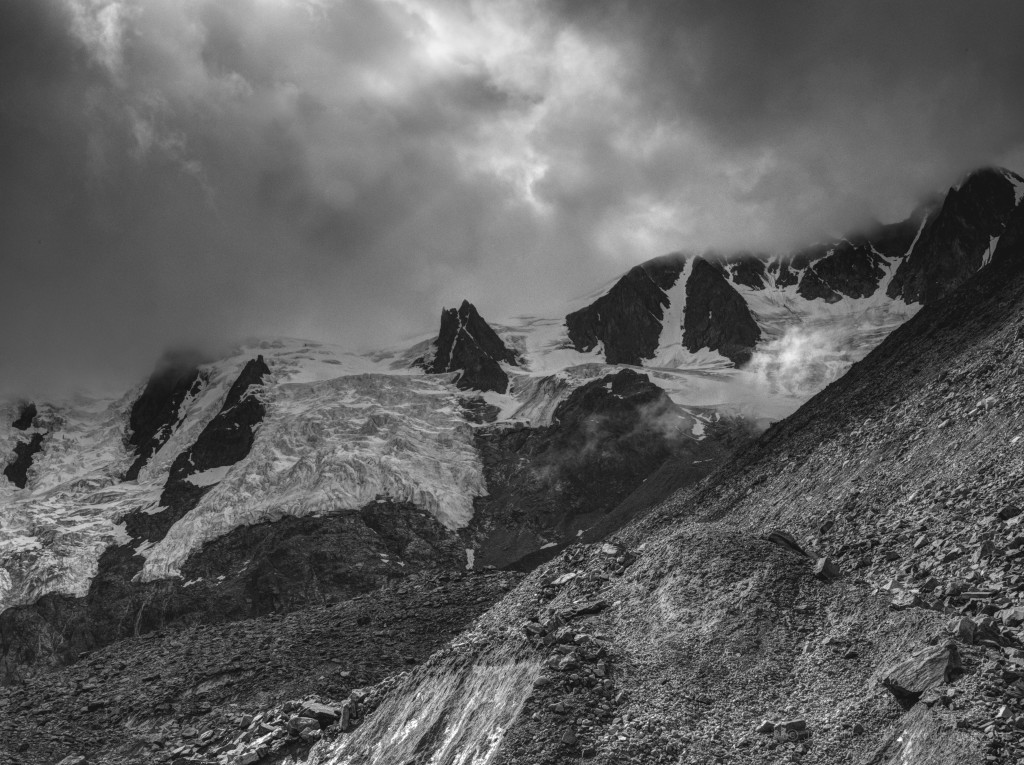
I was doing about a month of CrossFit before I hit a planned week long Alaska cruise with my mom. At this point, I was committed enough to working out that I did a few WODs on the cruise using weights and rowers.
Cruises aren’t my ideal method of traveling and exploring, but one thing it does provide is plenty of time to read. And I read a lot.
The first book I got through was Learning to Breathe Fire. It should be required reading for anyone that starts CrossFit. It’s basically the history of CrossFit up to the point of publication. But it really helped explain why CrossFit is set-up the way it is: why the workouts are designed in a certain way; what all the terms mean; how the sport evolved; and why the boxes are unique without much control from corporate HQ. After reading this book, I had a much more thorough understanding of what the program was all about.
Why not take full advantage of the work I had been putting into CrossFit and get maximal results by eating better?
Then I started reading some food books. The first that got me down this rabbit hole was The Big Fat Surprise by Nina Teicholz. Basically, fat doesn’t make you fat. Fat isn’t bad for you, despite all the USDA health guidelines I was raised on.
This path led to looking into paleo, the crazy-caveman diet I had written off. Like my turn to CrossFit, this too began bouncing around in my mind. And when I get curious about something, I’ll obsessively research it.
It definitely helped that I was on a cruise, surrounded by an endless supply of food and an abundance of people all too willing to keep eating it. Ok, that was a nice way of saying I was on a ship with a lot of fat people. It was a bit of a wake up call. Do I really want to continue going down this path and not care what I put into my body?
Why not take full advantage of the work I had been putting into CrossFit and get maximal results by eating better?
I started with Nom Nom Paleo, a book that’s part paleo insight, part cookbook. Funny enough, Michelle Tam was also on an Alaskan cruise with her family when she decided to go paleo right then and there. Her fellow passengers were also a source of inspiration for her.
I followed this up with one of the original paleo books, The Paleo Solution by Robb Wolf, which really helped me understand the science and ideas behind paleo.
Then I landed on It Starts with Food, the book for Whole 30. Whole 30 is basically a 30 day paleo challenge. The idea is to eat clean for a month, which is less intimidating than switching your diet indefinitely. It’s a reset for your body to see how you feel, and then you can re-introduce foods if you want after the 30 days.
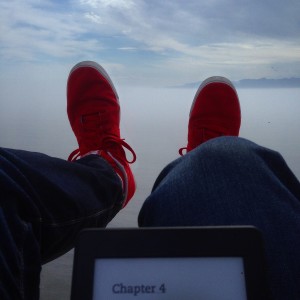 Now, I won’t say right then and there that I stopped eating foods developed after the paleolithic era. But I was more conscious of what I ate, and the idea of at least doing a Whole 30 when I returned was enticing.
Now, I won’t say right then and there that I stopped eating foods developed after the paleolithic era. But I was more conscious of what I ate, and the idea of at least doing a Whole 30 when I returned was enticing.
Being out in Alaska, I was also reminded of how much I loved hiking in the mountains. I signed up for every hike excursion I could find at each port. I love hiking – it’s one of the few activities I did enjoy growing up. But living in Miami, there aren’t a lot of options for hiking if you’re not prepared to be covered in a net and brave clouds of mosquitoes.
One summer in high school I went to a Boy Scout reservation in New Mexico where we hiked for ten days. The highlight of the trip was reaching the summit of one of the taller peaks in the area. I liked the goal of the summit over the act of just walking a lot.
Though we were far from any summits, being out in beauty of the mountains in Alaska reminded me of how much I enjoyed being in the outdoors.
Whole 30
I got back home with the determination to change my diet: I’m going to do Whole 30.
I clear out my fridge and take a printout of a shopping list to Whole Foods. It felt like that old show Supermarket Sweep, running around looking for things I’d never heard of before – ghee, coconut oil, a variety of spices.
I bought some meats for some recipes I had scouted that looked easy. Up to this point my cooking experience extended to boiling pasta and scrambling eggs.
I was kicking myself, thinking “Why didn’t I start this years ago?!?”
I didn’t find Whole 30 that hard. Now I have a history of making extreme diet changes – I was a vegetarian for seven years. But more importantly my head was in the right space. I wanted this change.
Before this, I hadn’t drank soda for a couple of years. It wasn’t that hard – I realized that as soon as a drank a soda, I’d feel like shit, whether from the sugar or the artificial sweetener. So it was easy to quit because I didn’t like feeling like shit.
My head was in the right space for Whole 30. So I didn’t miss much. I do like sweets, so I probably had more fruit and dark chocolate than I should have – but I still got results.
Within a day or two of starting, I began dropping weight, and really quick. The first week or two I was losing a pound a day. It seemed too easy to be true.
I was kicking myself, thinking “Why didn’t I start this years ago?!?”
I learned a lot about cooking and nutrition. When I would eat out and get a salad, it was amazing how I could taste all the sugar in a seemingly healthy vinaigrette dressing.
Here’s a chart documenting my weight from its highest in 2012 to today. The sudden drop is from paleo, along with the very recent drop to 171.
Once the 30 days was over I wasn’t in any desire to stuff my face with cake. I went from a little over 200 pounds to about 180, my post college weight. Though that’s not factoring in gained muscle mass.
Even though I wasn’t in a rush for carbs, it was hard to eat out. I settled into a routine of paleo at home, sensible eating when I’m out. This worked to maintain the weight.
A Tall Goal
Losing weight, getting into shape, being back in the mountains – it all got me inspired. It was one thing to get better at working out, lift more weight, do movements quicker. But I wanted to put my improved fitness to use.
The mountains of Alaska had stuck with me, and I remembered how much I liked hiking when I was younger. So I decided to climb a mountain. But not just a mountain you could hike up, something technical where’d I’d have to use new techniques and challenge myself.
Mt. Rainier had always impressed me, ever since I first saw it as a kid. I saw it again when we were in Seattle where the cruise departed. Even though it was over 60 miles away, it was a towering, magnificent mountain.
I scouted for different guided trips up to the top but figured if I’m going to go all the way out there, I might as well learn as much as I can and not just go for the shortest climb to the summit. So I signed up for a 10 day mountaineering course from Alpine Ascents. It was six days of skill work on nearby Mt Baker, learning how to move on glaciated terrain. Then it was a four-day summit up Rainier on a more technical route.
The expanded skill set would also enable me to work in more remote areas for outdoor shoots.
Motivating Target
After signing up for the course, one thing the preparation material repeated was you needed to be physically fit to handle the climb at high altitudes. I wasn’t worried that I wasn’t training, I was just concerned I wasn’t properly training for the task at hand. The best way to train for climbing is to go out and climb – weekend trips, day hikes, runs, whatever. But in Miami there’s nothing to climb. You’re at sea level so there’s nothing to help simulate the lower oxygen. I needed to figure something out.
Having a goal was the best source of motivation.
I started reading about mountaineering and training for climbing. One of the best books I found – not just for climbing but overall fitness – was Training for the New Alpinism.
It explained the demands climbing puts on the body, how you need not just strength but a large aerobic capacity and the ability to keep moving for ten hours a day with 60 a pound bag.
It had a whole training cycle laid out, based on when you’d need to perform at your peak at the time of your climb. This introduced me to periodization.
My biggest takeaways were that I’d need to start running and I should focus on heart rate zone training. The running would be the best I could substitute for the weekend climbs I couldn’t do. I knew it would help build up my VO2 max, but up to this point I was not very fond of running.
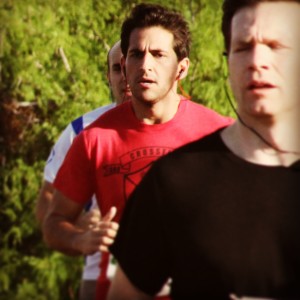
4K run at NAB
I read Kelly Starrett’s Ready to Run to get a good form down, picked up some headphones and iPhone accessories and started going for runs. To my surprise, once I started, I found I really enjoyed it. I used a training course from Runtastic to work on improving my pace. And the more I ran, the more my overall fitness improved. WODs at CrossFit that used to leave me winded were now easier. I even took some boxing classes my CrossFit box offered, which really help build my endurance.
I also picked up a heart rate monitor to keep track of the intensity of the runs. In combination with a Pebble watch, I was able to keep track of distance and pace without having to pull out my phone. It was a very functional arm.
So running, combined with CrossFit, weightlifting, occasional boxing for cardio, some trail runs, and the short backpacking trips I could fit in when I was traveling was what trained me for Rainier.
Having this goal/target was the best source of motivation.
When I didn’t feel like getting up early or I was in Boston in February and knew I needed to run in the snow, I’d just think of getting to the top of that mountain.
I would think of myself on the mountain, struggling to get up, thinking back to that moment I was debating whether to train or not, and cursing myself for not training. That was enough motivation to get me going, in order to be prepared to get to the top.
At The Top
May came around, and before I knew it, I had a fully loaded bag and was hiking into the Cascades. The first part was training on Mt. Baker, which was just a three mile hike into camp that we stayed at the entire time.
 I didn’t feel physically taxed. My biggest challenge was learning how to walk in snow. I think I spent more time in snow on this trip than the sum of all of my previous snow experience of my entire life. So I’d fall a lot, especially on trails that were becoming a little slushy. But I’d just have to pop myself back up and keep moving. You’re on a rope team – tied in to two other people. So if you fall or stop, you’re going to be tugging at someone on your team and might cause them to fall.
I didn’t feel physically taxed. My biggest challenge was learning how to walk in snow. I think I spent more time in snow on this trip than the sum of all of my previous snow experience of my entire life. So I’d fall a lot, especially on trails that were becoming a little slushy. But I’d just have to pop myself back up and keep moving. You’re on a rope team – tied in to two other people. So if you fall or stop, you’re going to be tugging at someone on your team and might cause them to fall.
We covered a variety of vital skills, including rope work, walking through glaciated terrain, ice climbing, and crevasse rescue. The week was capped off with a summit of Mt. Baker.
Once our training was done we packed out and headed to Rainier.
The mountain was engulfed in a thick fog. You couldn’t see more than 30 feet in front of you, let alone the top of the mountain you’re climbing. Beginning the hike I felt the weight on back. I was thinking, “Fuck, am I going to be able to carry this all the way up this mountain?” But you just put one leg in front of the other and keep going.
We set up the first camp without much idea of where we were. Well, ‘we’ the clients. The guides who do this route all summer knew exactly where we were.
The next day we continued hiking in the white out. Walking across ice bridges above crevasses, it feels like another planet, like a place you’re not supposed to be.
I was thinking, “Fuck, am I going to be able to carry this all the way up this mountain?”
We walked up the mountain for about half a day until we reached another resting point. I threw down my bag, turned around and realized we’re out of the white out because we climbed above the clouds. Blue skies above over a sea of white beneath you, with the peaks of fellow mountains breaking through the top. The view is stunning.
We kept climbing some more to our high camp, a spot near the glacier we’re going to climb to reach the summit.
3AM the next morning. Time to leave for the summit. 90% of climbers going up Rainier take the Muir route. We’re taking one of the other routes, up the Kautz glacier.
 I had looked at it the day before. It’s about a 1000 foot climb up snow and ice on a 50 degree angle. Down at the other end towards the base of the glacier were some steep drops where the ice began calving.
I had looked at it the day before. It’s about a 1000 foot climb up snow and ice on a 50 degree angle. Down at the other end towards the base of the glacier were some steep drops where the ice began calving.
In darkness we walk across the middle of this glacier, then begin climbing up it. The cold from the night freezes the entire surface solid.
Hitting it in the middle of the night was a surreal experience. I just had one rope partner, Mike, one of the guides. Instead of going single file we moved side by side. I had two ice axes in my hand, crampons on my boots, and we just powered up this tilted wall of ice.
If you overthink it, you’d realize that if you slip and slide down, you’d be going for a very fast ride down an ice slide that shoots you off the end of the glacier (assuming that you and your rope partner fail to stop the fall, which is unlikely).
But there wasn’t time to think of what-ifs. Mike believed in me, I had to get up this glacier, so I just did it. Calves were burning, fingers were getting numb, but using the tools I just clawed my way up there.
By the time we reached the top of the glacier, the sun was breaking above the horizon. We were on the west side of the mountain, so we were in the shadow of the light. Looking out, we saw the shadow of the mountain stretched across the clouds. It was one of the best sunrises I’ve ever seen.
After the glacier we had a few thousand feet left to the summit. We kept moving in our rope teams.
Despite being on snow, the mountain turns into a giant solar reflector. It was turning into a pretty warm day and things were heating up. The heat got so bad that some of the climbers that were from cloudy Scotland got sick from the heat. I found the situation ironic because training in heat was the only advantage I had.
Passing 12,000 and 13,000 feet I started to feel the affects of the elevation. Nothing debilitating, but I’d have to take a deeper breath to fill my lungs. One slow step after another you keep moving up the mountain.
Finally, at 14,411 feet we reached the summit. The top of Rainier is actually a giant crater and a little anticlimactic for a summit. There’s no grand peak to prop your leg on. There’s just one spot that’s slightly higher than the rest of somewhat large and flat top of the mountain.
I did some summit yoga and pushups to mark the occasion.

Going down was considerably easier. We went back to our high camp. The next morning we packed up and walked down. What took us two days to climb up took a few hours to climb down. Also, the weather had cleared up so we could see beautiful views of the mountain during our descent. We were able to see what we had come through in clear settings. During a break I asked one of the guides where our first camp was. “You’re sitting in it.”
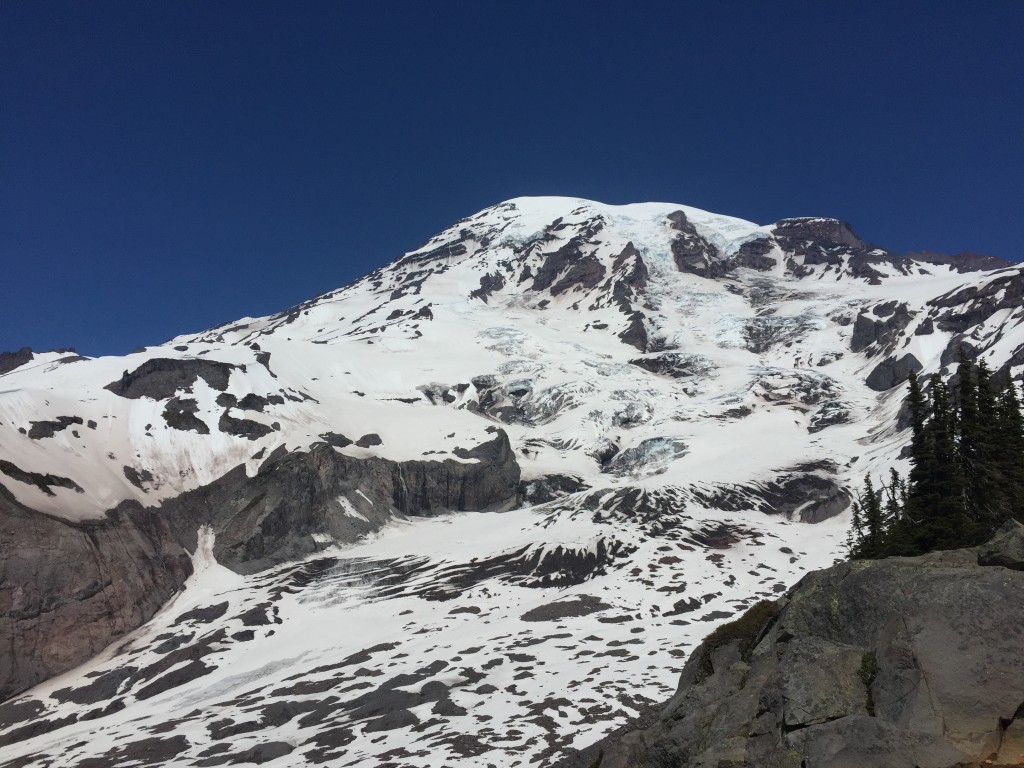
So I climbed my mountain, both literally and metaphorically. But afterwards it was a bit of, “Now what?”
Curveballs
I traveled for a bit after Rainier. Then I took a six week job as a camera operator, traveling a lot, eating road food, and working overnight. This totally put me out of whack. Towards the end of the shoot my Crohn’s was flaring up and I started getting debilitating stomach pains. I hadn’t dealt with a flare-up in nearly five years.
It continued to get worse, the pinnacle being the week of my birthday at the end of September. I could barely eat anything, I had no appetite and every time I tried to eat felt like a painful lump going down.
It’s gotten somewhat better. I’m on a steroid which has helped with the inflammation, along with a fistful of supplements. But I’m still not at 100%. I’m at a crossroads where I want to try to solve this holistically through diet and lifestyle and the meds I’ve been taking for years instead of getting on a more powerful drug. But the drugs will probably prevail, the stakes are too high.
I do feel fortunate because there are people who have far worse symptoms than I. But it hasn’t been easy. However I always promised myself I wouldn’t let this dictate my life. I’m already planning my next projects.
Take Aways
I boiled down my experience into three lessons learned.
I Needed to find my own sport. I wasn’t exposed to many sports as a kid, and the ones I did play were the usual baseball or soccer, which I never enjoyed. From my recent experience I’ve learned I like solo activities. I like competing against myself and working on skills for self improvement and satisfaction, something that I found CrossFit provided.
Goals are great motivators. As I wrote, needing to be in shape to climb Rainier was a great motivator for months to stick with my workouts and keep going. But you don’t need to pick a mountain to climb. Anything from a local competition, a 5K, or an agreement with a gym partner to hit a new goal will work. I find that it helps to just have some sort of external pressure to keep you focused and going.
The first step is the hardest. It took me forever to change my diet, and then once I finally did changes came quickly and pretty easily. I was annoyed for not doing it sooner. But you’ve got to show up. To paraphrase Woody Allen, 80% of success is showing up.
